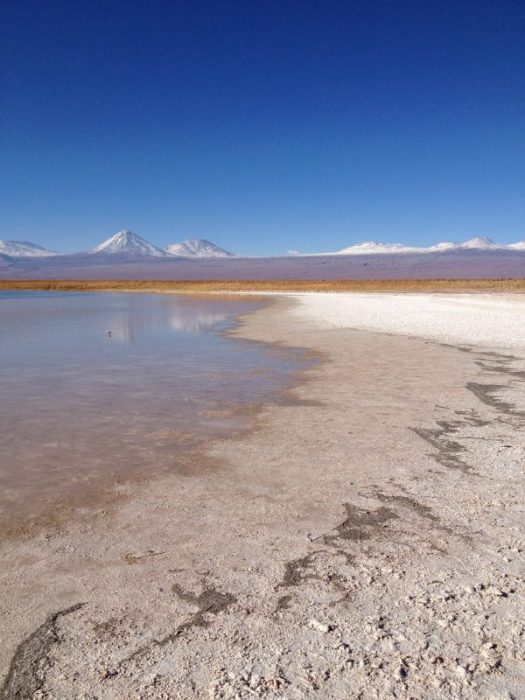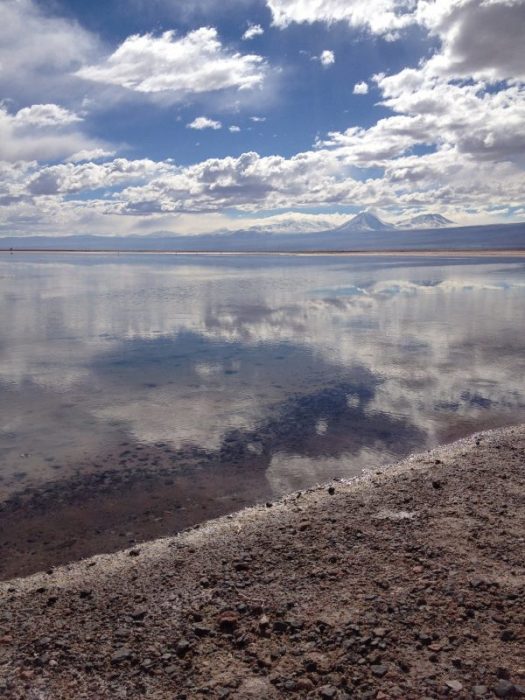
Understanding the sensitivity of glaciers to changes in climate provides insight into the climatic drivers of past glaciations and helps us predict how glaciers and ice sheets may respond to future warming.
The South American Andes are ~7000 km long, and the full length of the range is glaciated, or has been glaciated as recently as the last Pleistocene (~20,000 years ago). This means that glaciers in the Andes exist, or have existed, in a broad range of climatic settings.
Between 18 and 27 °S, in the subtropical Andes, there are rock and sediment deposits from past glaciers but no modern glaciers, even at altitudes over 6000 m. These glacial deposits have been used by scientists to identify when the glaciers that used to exist in the area were at their maximum extent. Those scientists found that maximum glaciation occurred at different times across three distinct sub-regions: the northern Altiplano, the hyper-arid western cordillera, and the more humid eastern cordillera.
While temperatures are similar across the three regions, the western cordillera is drier and receives more radiation than the other regions. The out-of-phase timing of glaciation across these three regions, likely due to those differences in climate, makes the subtropical Andes an especially interesting area to investigate the relationship between glaciers and climate.
We use a numerical glacier model to calculate the changes in climate, compared with today, that would have been required for glaciers to have previously existed in the subtropical Andes. The model calculates the changes in the modern climate, including temperature, precipitation, and radiation, required for glaciers to exist in each of the three regions.

Credit: Lauren Vargo
The eastern cordillera likely had glaciers ~23,000 years ago during the Last Glacial Maximum, when temperatures were ~6°C colder than they are today. Our model shows that by simply decreasing temperatures by 6°C in the eastern cordillera, the climate would support glaciers.
Maximum glaciations in the Altiplano and the hyper-arid western cordillera was likely closer to ~15,000 years ago, when temperatures were ~3.5°C colder than they are today. Our model shows that in these regions, simply decreasing temperatures is not enough to support glaciers and that further increases in precipitation, decreases in incoming radiation, or a combination of both, is necessary.
In the Altiplano, increasing precipitation of 10 – 60%, in conjunction with lower incoming radiation of 7 – 12% and lower temperatures of 3.5 °C would have supported glaciers in the area. In the western cordillera, for the same lower radiation and temperature, precipitation needs to be 90 – 160% higher than modern for the region to have supported glaciers.
We find that glaciation of the Altiplano and western cordillera is ~3 times more sensitive to changes in precipitation and ~2.5 times more sensitive to changes in shortwave radiation compared with the eastern cordillera. While all three regions are part of the arid subtropical Andes, the extremely high sensitivity of glaciation in the western cordillera is likely due to the especially low precipitation and high radiation in the area.

Credit: Lauren Vargo
These results suggest that future changes in precipitation and radiation can be as important as upcoming warming for future changes in subtropical glaciers.
These findings are described in the article entitled Sensitivity of glaciation in the arid subtropical Andes to changes in temperature, precipitation, and solar radiation, recently published in the journal Global and Planetary Change. This work was conducted by L.J. Vargo from the Victoria University of Wellington, J. Galewsky from the University of New Mexico, S. Rupper from the University of Utah, and D.J. Ward from the University of Cincinnati.









